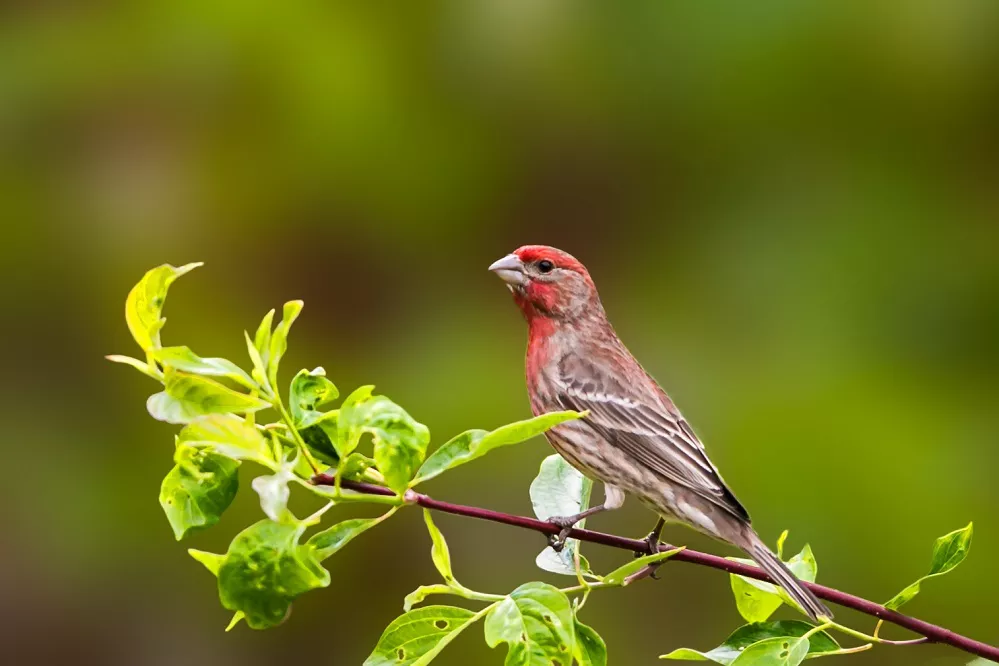House finches (Haemorhous mexicanus) are delightful little birds known for their beautiful plumage and melodic songs. These small songbirds are common visitors to backyards and gardens across North America. If you’re curious about the dietary preferences of house finches, read on to discover what these colorful birds enjoy feasting on.
House finches are primarily granivorous, meaning they have a diet predominantly composed of seeds. However, their food choices can vary depending on the availability of resources in their environment. Let’s explore the main food sources that house finches rely on to meet their nutritional needs.
What Do House Finches Eat?
Seeds:
Seeds form the staple diet of house finches. They have specialized beaks that allow them to crack open the hard shells of various seeds. These adaptable birds consume a wide range of seeds, including those from native and introduced plants. Some favorite seed options for house finches include sunflower seeds, millet, thistle (nyjer) seeds, and dandelion seeds. These tiny birds deftly use their beaks to husk the seeds and extract the nutritious kernels inside.
Fruits and Berries:
House finches also enjoy incorporating fruits and berries into their diet when available. They are particularly fond of small, fleshy fruits and berries such as strawberries, blackberries, raspberries, cherries, and mulberries. These sweet treats not only provide a source of hydration but also offer additional vitamins and minerals. House finches will pluck fruits and berries directly from trees, shrubs, or even garden plants.
Flower Buds and Nectar:
House finches are known to occasionally nibble on flower buds, especially during the spring season. They may feed on the tender buds of various flowering plants, such as roses and hibiscus. While they are not significant nectar feeders like hummingbirds, house finches may visit flowers to sip small amounts of nectar. They use their delicate beaks to access the nectar hidden within the flowers.
Insects:
While seeds and fruits form the bulk of their diet, house finches also supplement their nutritional intake with small insects and invertebrates. During the breeding season, adult house finches incorporate protein-rich insects into their diet to support the growth of their chicks. Common insect prey for house finches includes aphids, caterpillars, spiders, and beetles. They actively search for these small invertebrates in trees, shrubs, and among foliage.
Human-Supplied Foods:
House finches readily take advantage of supplementary food sources provided by humans. Many bird enthusiasts enjoy attracting these colorful birds to their backyards by offering bird feeders filled with appropriate seeds. Sunflower seeds, nyjer seeds, and mixed seed blends specifically formulated for finches are popular choices. House finches are frequent visitors to feeders, where they bring their vibrant presence and melodious songs. Fresh water sources, such as birdbaths or shallow dishes, are also essential for their hydration needs.
It’s important to note that the diet of house finches can vary depending on the availability of food in their environment. Their preferences may change seasonally as different food sources become abundant or scarce. By offering a diverse range of foods, including seeds, fruits, and even insects, you can create a habitat that attracts house finches and provides them with the necessary nutrition to thrive.
In conclusion, house finches primarily eat seeds, with a particular affinity for small oil-rich seeds. They also enjoy fruits, berries, flowers, and nectar when available. Additionally, they consume insects to supplement their protein needs, especially during the breeding season. By understanding the dietary preferences of house finches, we can create environments that support these beautiful birds and enjoy their lively presence in our lives.


 Facebook
Facebook  Instagram
Instagram  Youtube
Youtube 